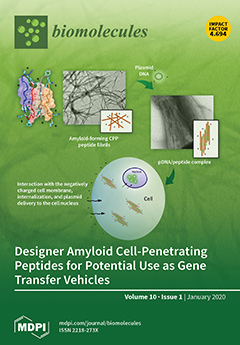Since the first discovery in 1961, more than 1300
ent-kaurane diterpenoids have been isolated and identified from different plant sources, mainly the genus
Isodon. Chemically, they consist of a perhydrophenanthrene subunit and a cyclopentane ring. A large number of reports describe
[...] Read more.
Since the first discovery in 1961, more than 1300
ent-kaurane diterpenoids have been isolated and identified from different plant sources, mainly the genus
Isodon. Chemically, they consist of a perhydrophenanthrene subunit and a cyclopentane ring. A large number of reports describe the anticancer potential and mechanism of action of
ent-kaurane compounds in a series of cancer cell lines. Oridonin is one of the prime anticancer
ent-kaurane diterpenoids that is currently in a phase-I clinical trial in China. In this review, we have extensively summarized the anticancer activities of
ent-kaurane diterpenoids according to their plant sources, mechanistic pathways, and biological targets. Literature analysis found that anticancer effect of
ent-kauranes are mainly mediated through regulation of apoptosis, cell cycle arrest, autophagy, and metastasis. Induction of apoptosis is associated with modulation of BCL-2, BAX, PARP, cytochrome c, and cleaved caspase-3, -8, and -9, while cell cycle arrest is controlled by cyclin D1, c-Myc, p21, p53, and CDK-2 and -4. The most common metastatic target proteins of
ent-kauranes are MMP-2, MMP-9, VEGF, and VEGFR whereas LC-II and mTOR are key regulators to induce autophagy.
Full article






